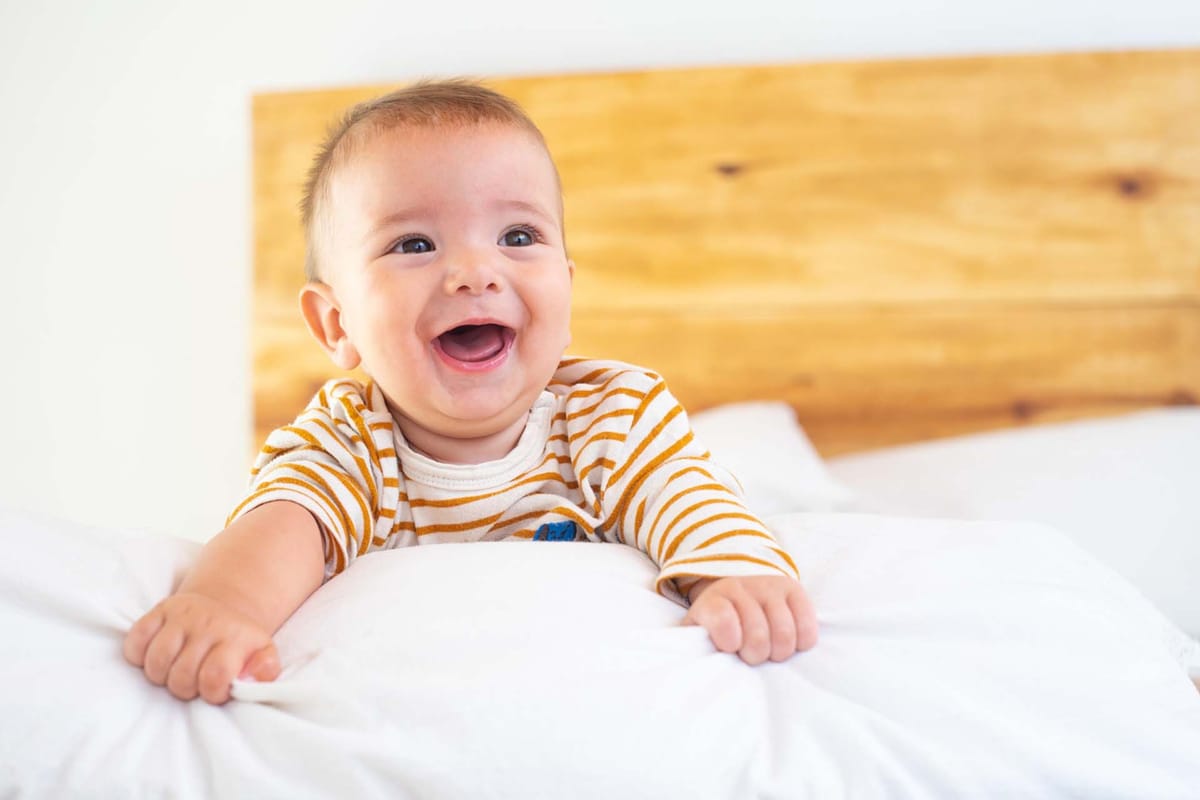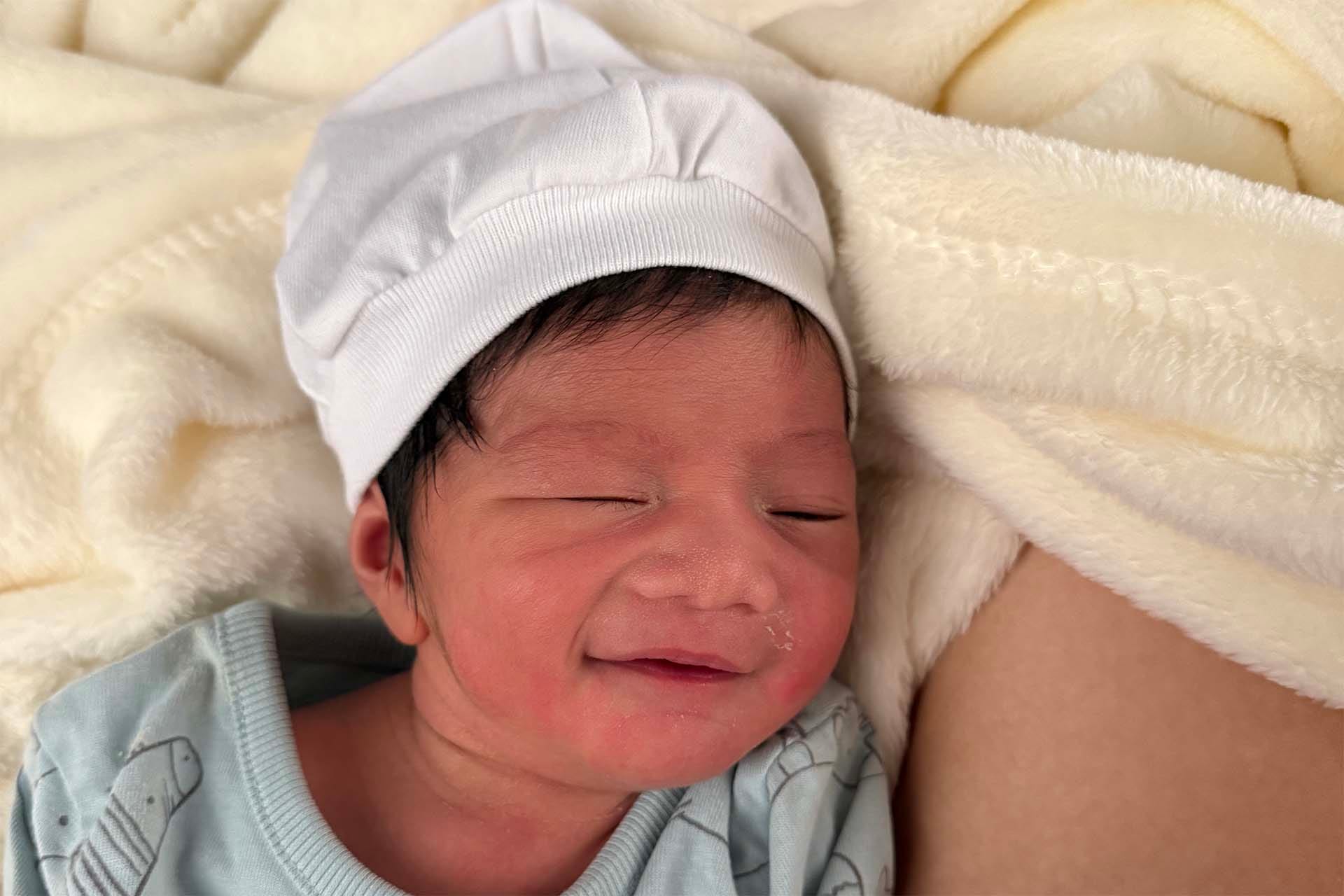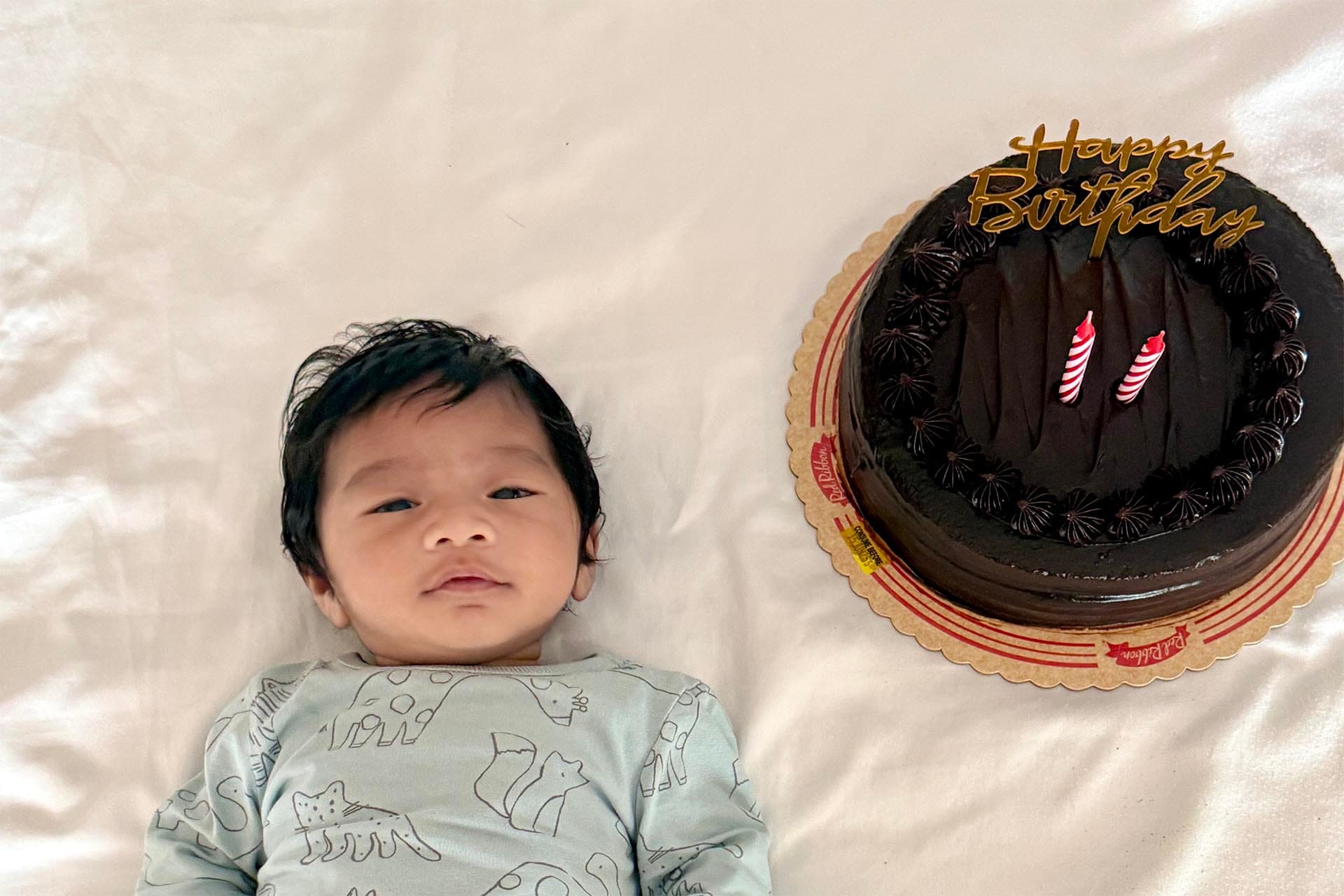When Do Babies Start Smiling? A Parent’s Guide to Baby Facial Expressions
Babies usually start smiling socially around 6–8 weeks, and you can encourage those early grins by talking, singing, making eye contact, and playing simple games.

You probably spend hours watching your baby's face, waiting for that magical moment when they flash their first real smile.
You might notice little grins and expressions during sleep, but you're wondering when your baby will actually smile back at you. This milestone is one of the most exciting "firsts" that parents look forward to experiencing with their little one.
Smiling isn't just an adorable moment that makes your heart melt. These facial expressions are actually important signs of your baby's growth and development.
Understanding when and why babies start smiling can help you know what to expect and how to encourage these special interactions with your child.
Why Smiling is an Important Developmental Sign
When your baby smiles, it shows that their brain is growing and developing properly. Smiling is a signal that your baby's nervous system is working well. As babies grow, their smiles change from simple movements to real ways of communicating with you.
This progression shows that your baby is learning to connect with people around them and building important social skills.
What Does a Baby’s First Smile Mean?
Your baby's first smiles are different from the smiles you'll see later. These early smiles happen automatically, usually when your baby is sleeping or just waking up. They don't smile because they see you or because something makes them happy. Instead, these smiles come from natural brain activity as your baby develops.
Doctors call them "reflex smiles" because they happen on their own. Think of these early smiles as your baby's brain and muscles getting ready for real social smiling that will come later.
I first saw my baby's reflex smile just three days after he was born, right as he was about to fall asleep after having milk.

When Do Babies Start Smiling Socially?
Real social smiling — when your baby smiles directly at you on purpose — usually happens around 6 to 8 weeks. This is when babies start spending more time awake and alert, looking around at faces instead of sleeping most of the day.
I noticed my baby’s very first social smile just a few days before he turned 8 weeks, right around the 2-month mark. It was such a sweet moment to see him looking straight at me and smiling on purpose. I’m so glad I was able to capture one of those early smiles in his 2-month picture.

Social smiling doesn't just happen because babies get older — it requires several different abilities.
At 1 month, babies can only look at simple parts of faces, like the outline of their caregiver’s head and eyes. By 2 months, they can look back and forth between different parts of the face — the head, eyes, and mouth. This improved vision helps them notice facial expressions better (1).
When a 2-month-old baby can look at your whole face, stay alert and calm, and their brain is mature enough to recognize you, that's when they can give you their first real social smile.
Stages of Baby Facial Expression
As weeks go by, you’ll notice your baby’s expressions becoming more intentional and varied. Each new stage gives you a glimpse into their emotional and social progress.
Reflex Smiles
Reflex smiles are the first smiles you’ll notice, usually appearing in the newborn stage (within the first month). These early smiles aren’t intentional — they often happen during sleep, after feeding, or when your baby’s body is going through reflexive movements.
In fact, researchers have found that most newborn smiles occur during the rapid eye movement (REM) stage of sleep, when babies may even show complex facial expressions before they’re able to do so while awake. These sleep-related smiles come from natural brain and nervous system activity rather than social interaction (2).
Social Smiles
At about 6 to 8 weeks, babies usually start smiling on purpose. These social smiles are their way of responding to your face, your voice, or playful moments together. It’s an important sign that your baby is beginning to connect emotionally with the people around them.
Laugh and Giggles
Around 3 to 4 months, many babies begin to laugh out loud. At first, laughter often comes as a reaction to physical play, such as tickling. As they grow, babies start to laugh during shared moments, like peek-a-boo or funny sounds, which reflects the early stages of humor and joint attention (3). These giggles show that your baby is not only enjoying interaction but also beginning to process surprise and amusement.
Other Facial Expressions
Between 4 and 6 months, your baby’s face will start to reveal more complex feelings like happiness, sadness, and frustration. My husband and I were surprised one day when he accidentally hit his toe on the table — our baby immediately made a worried, almost distressed face and seemed ready to cry.
This reaction isn’t just adorable. Research shows that by around 5 months, infants can recognize and even mirror the emotional expressions of others (4).
How to Encourage Your Baby to Smile
Watching your baby’s smile for the first time is magical, and the good news is that there are simple ways you can encourage those early grins.
Talk and sing
Your baby loves the sound of your voice. Talking, singing, or narrating what you’re doing helps them notice sounds, rhythms, and facial movements, which encourages them to respond with smiles.
Make eye contact
Looking into your baby’s eyes shows attention and warmth. It signals that you’re fully present. Even if your baby initiates eye contact first, make sure to respond by holding their gaze for as long as they seem interested.
Play and interact
Gentle games like peek-a-boo or silly faces don’t just make your baby laugh — they help you both build connection. Research shows that these shared play routines engage babies and caregivers and even trigger oxytocin, the “bonding hormone,” which strengthens your emotional bond (5).
What If My Baby Doesn’t Smile By 2 Months?
Not all babies smile at the same time. While many show their first social smile around 6 to 8 weeks, some may take a little longer. A baby’s temperament, alertness, or even how much time they’ve spent awake and interacting can affect when you see that first grin.
Premature babies, for example, may reach milestones later than babies born at full term.
If your baby hasn’t smiled socially by 2 months, it doesn’t always mean something is wrong. Keep in mind that babies develop at their own pace. However, it’s always a good idea to bring up any concerns with your pediatrician. They can check for possible vision, hearing, or developmental delays.
Takeaways
Your baby’s first smile is an early signal of their milestones and the bond you’re building. Keep talking, singing, playing, and sharing those special moments of eye contact.
You’ll soon discover that the smiles you’ve been waiting for are just the beginning of the joyful bond you and your baby will build together!
Frequently Asked Questions
Why does my newborn smile in their sleep?
Newborns usually smile in their sleep because of reflexive or spontaneous movements. These “reflex smiles” happen naturally as part of their nervous system development and are not yet social smiles. It’s a normal and healthy part of early infancy.
Why do some babies smile more often than others?
Babies have different temperaments and sensitivities. Some are naturally more expressive, while others may show emotions more subtly. Both frequent and infrequent smilers are healthy, and each baby’s unique personality will develop at its own pace.
Sources:
- Messinger, Daniel & Fogel, Alan. (2007). The Interactive Development Of Social Smiling. Advances in child development and behavior. 35. 327-66. 10.1016/B978-0-12-009735-7.50014-1.
- Pacheco, D., & Pacheco, D. (2025, July 15). Why do babies smile in their sleep? Sleep Foundation. https://www.sleepfoundation.org/baby-sleep/why-do-babies-smile-in-their-sleep
- Mireault, G., Sparrow, J., Poutre, M., Perdue, B., & Macke, L. (2012). Infant Humor Perception from 3- to 6-months and Attachment at One Year. Infant Behavior & Development, 35(4), 797. https://doi.org/10.1016/j.infbeh.2012.07.018
- Babies can read each other’s moods, study finds. (2013, June 13). ScienceDaily. https://www.sciencedaily.com/releases/2013/06/130627102835.htm
- Markova, G. (2018). The Games Infants Play: Social Games During Early Mother–Infant Interactions and Their Relationship With Oxytocin. Frontiers in Psychology, 9, 1041. https://doi.org/10.3389/fpsyg.2018.01041